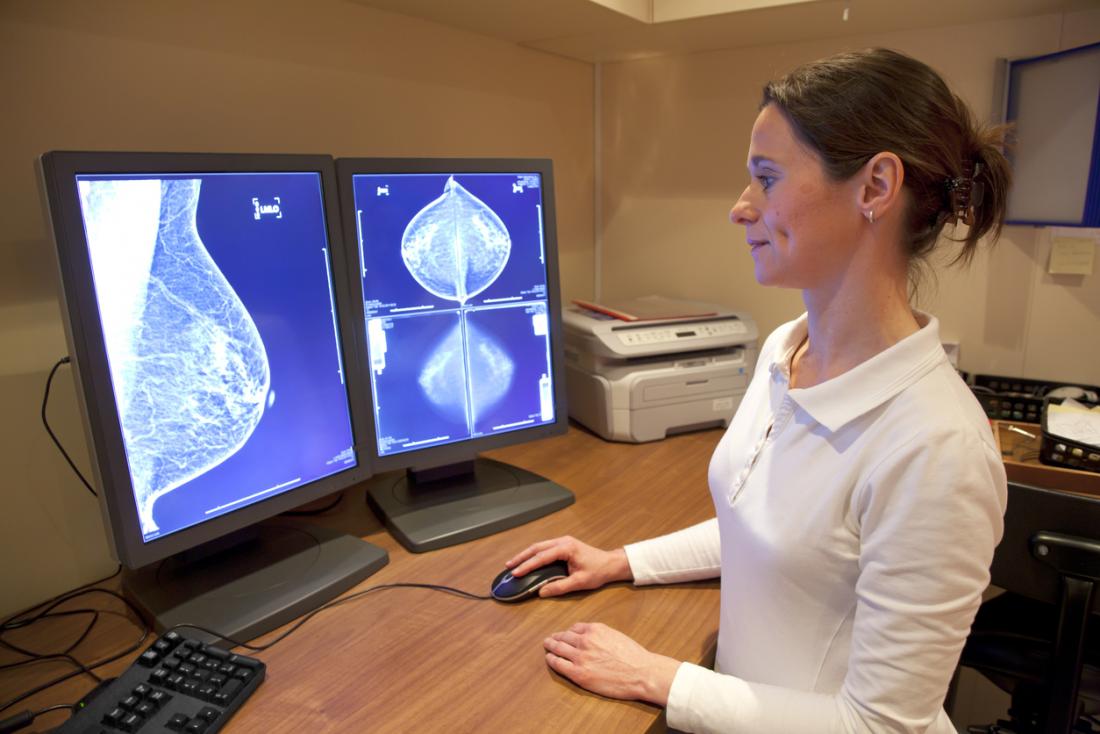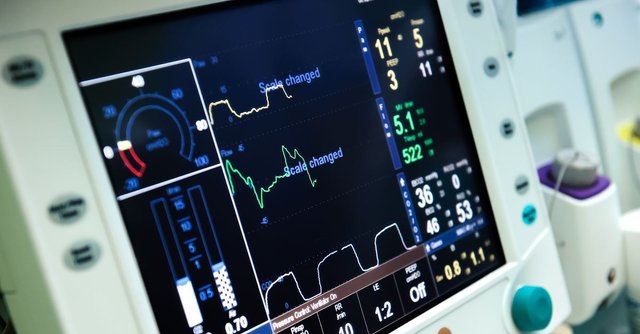Breast and ovarian cancers: Large study improves estimates of genetic risk Published Tuesday 20 June 2017 By Catharine Paddock PhD

The results of a large prospective cohort study have shown that the risk of developing breast and ovarian cancer in carriers of faulty BRCA1 and BRCA2 genes can be accurately estimated by age.
A new study that followed 10,000 women provides more accurate, age-related estimates of the risk of developing breast and ovarian cancer in carriers of mutations of the BRCA1 and BRCA2 genes. It also suggests that family history and the location of the mutations on the gene should be taken into account.
The study - led by the University of Cambridge in the United Kingdom - is reported in JAMA.
The findings should help doctors to improve the advice and counseling they give on treatment options and risk-reducing lifestyle changes, suggest the researchers.
Lead author Antonis Antoniou, Ph.D., of Cambridge's Department of Public Health and Primary Care, says, "We have been able to provide the most precise estimates of age-specific risks to date. These should provide more confidence in the counseling and clinical management of women with faults in the BRCA1 and BRCA2 genes."
Cancer develops because of changes to genes that regulate the way that cells work, grow, and divide, causing them to get out of control.
Some of the genetic changes that lead to cancer are inherited, while others can arise during a person's lifetime, due to either copy errors or environmental factors - such as exposure to tobacco smoke and radiation - that damage DNA.
Higher risks from BRCA1 and BRCA2
Often, it is an accumulation of hundreds of genetic changes - each of which raises a person's risk by a small amount - that causes cancer.
However, there are some genes, such as BRCA1 and BRCA2, where we know that mutations or errors in their code can greatly increase the risk of breast and ovarian cancer.
Normally, BRCA1 and BRCA2 help to protect against cancer, but certain mutations in one or both of the genes make cells "more likely to divide and change" more rapidly, giving rise to cancer.
The reason that the new study is significant is that until now, all risk assessments for patients with BRCA1 and BRCA2 mutations have relied on the results of "retrospective" studies - that is, those that look back on groups of patients who already have the disease.
Being "after the fact," retrospective studies are prone to inherent problems such as bias and inaccuracies in recording and reporting of the desired information.
The new study is a prospective cohort study - it recruited a large group of nearly 10,000 cancer-free women with risk versions of BRCA1 and BRCA2 and followed them over a period, during which some of the women developed breast and ovarian cancer, while some did not.
Previous prospective studies of BRCA1 and BRCA2 have been done, but they have been very small - for example, the largest one had just 64 cases of breast cancer.
Age-related risk profiles
When they analyzed the results, Dr. Antoniou and colleagues found that for carriers of BRCA1 mutations, the rates of breast cancer rose rapidly until the age of 30 to 40 years and then remained at the same level until the age of 80.
In the case of BRCA2 mutation carriers, the rates of breast cancer rose rapidly until the age of 40 to 50 years, and then also stayed at the same level until the age of 80.
The team found that the risk of developing breast cancer before the age of 80 was 72 percent for women carrying a faulty BRCA1 gene, and 69 percent for women carrying a faulty BRCA2 gene.
Similarly, the researchers found that the risk of developing ovarian cancer before the age of 80 was 44 percent for women carrying a faulty BRCA1 gene, and 17 percent for women carrying a faulty BRCA2 gene.
The risk of contralateral breast cancer - or developing cancer in the opposite breast - 20 years after having it diagnosed in the first breast was found to be 40 percent for carriers of a faulty BRCA1 gene, and 26 percent for carriers of a faulty BRCA2 gene.
However, in both breast and ovarian cancer, having a family history such as a relative diagnosed with one of the cancers would raise the risk. The amount of increase went up with the number of first- and second-degree relatives diagnosed with breast cancer.
Finally, the researchers discovered that the degree of cancer risk varies by position of the mutation within the BRCA1 or BRCA2 gene.
Dr. Charles Shapiro, director of Cancer Survivorship and Director of Translational Breast Cancer and Research at the Tisch Cancer Institute at Mount Sinai in New York City, NY, comments on the value of the new study:
"A single-institution [study] has too few of these women with inherited germ-line mutations to have sufficient numbers for valid statistical analysis. However, this study pooled the several results of several institutions leading to a relatively large sample. This combined analysis means there is more confidence in the results."
Learn how a BRCA1 mutation may raise risk of aggressive endometrial cancer. Taiwan Healthcare+ recommended
Taiwan Healthcare+ recommended
Would you like to offer genetic testing & screening services to your customers?
taiwan-healthcare.org/Taiwan+biotech
RELATED COVERAGE
Just one small glass of wine per day increases breast cancer risk
Published Tuesday 23 May 2017 By Ana Sandoiu 
New research suggests that as little as one glass of wine each day may increase breast cancer risk by 5 percent.
Breast cancer is the most common form of cancer among women across the globe. New research suggests that as little as one alcoholic drink per day can increase breast cancer risk, while exercise and a healthful diet lowers the risk.
In 2012, 1.7 million cases of breast cancer were diagnosed across the globe, which makes up 25 percent of all cancer diagnoses in women.
Worldwide, breast cancer is the second leading cause of cancer-related death among women. In the United States, almost 231,000 women were diagnosed with breast cancer in 2013, along with more than 2,100 men.
There are several risk factors that increase a woman's likelihood of developing breast cancer. These include older age, early menarche, and having a family history of breast cancer.
While there is little a woman can do to control these risk factors, there are additional lifestyle risk factors that women can adjust in order to lower their risk.
A new report conducted by the American Institute for Cancer Research (AICR), in collaboration with the World Cancer Research Fund, examined several risk factors for breast cancer, including alcohol, diet, and weight.
Alcohol increases breast cancer risk, exercise lowers it
The report consisted of a meta-analysis of 119 existing studies that together examined the clinical data available on 12 million women, adding up to a total of 260,000 cases of breast cancer.
According to the report, as little as 10 grams of alcohol per day - the equivalent of a small glass of wine or beer - raises the risk of premenopausual breast cancer by 5 percent. The same amount of alcohol raises the risk of postmenopausal breast cancer - the most common form of breast cancer - by 9 percent.
Ten grams of alcohol amounts to less than the "standard" drink, which currently consists of 14 grams of alcohol.
Furthermore, the report confirmed that being overweight, having obesity, or just gaining more weight in adulthood increases the likelihood of postmenopausal breast cancer. Conversely, moderate exercise decreased the risk of both pre- and postmenopausal cancer.
Postmenopausal women who were the most active were 10 percent less likely to develop breast cancer compared with their least active counterparts. For premenopausal women, this drop in risk was 17 percent.
Foods high in carotenoids may decrease breast cancer risk
In terms of diet, the report found "limited evidence" that non-starchy vegetables may decrease the risk of the so-called estrogen-receptor-negative breast cancers. These represent a rarer type of breast cancer, but one that may be more aggressive and have a poorer prognosis.
Non-starchy vegetables include broccoli, cabbage, brussel sprouts, leeks, beans, and spinach. The University of Michigan in Ann Arbor offers a full list of non-starchy vegetables.
The report also found a link between diets high in dairy, calcium, and carotenoids, and a lower risk of breast cancer. Carotenoids are pigments synthesized by plants, which often account for their yellow, orange, or red color. Foods with high carotenoid levels include pumpkins, apricots, carrots, spinach, and kale.
The evidence for the link between carotenoids and a lower risk of breast cancer is, however, also limited, and the authors admit that more research is needed to confirm the results.
Dr. Anne McTiernan, Ph.D. - one of the lead authors of the report and cancer prevention expert at the Fred Hutchinson Cancer Research Center - comments on the findings:
"The findings indicate that women may get some benefit from including more non-starchy vegetables with high variety, including foods that contain carotenoids. That can also help avoid the common 1 to 2 pounds women are gaining every year, which is key for lowering cancer risk.
With this comprehensive and up-to-date report the evidence is clear: having a physically active lifestyle, maintaining a healthy weight throughout life, and limiting alcohol - these are all steps women can take to lower their risk."
Alice Bender, AICR's head of nutrition programs, also comments on the results, recommending a few more measures that women can take to lower their risk:
"Wherever you are with physical activity, try to nudge it up a bit, either a little longer or a little harder. Make simple food shifts to boost protection - substitute veggies like carrots, bell peppers, or green salad for chips and crackers and if you drink alcohol, stick to a single drink or less," Bender says.
"There are no guarantees when it comes to cancer, but it's empowering to know you can do something to lower your risk," she adds.
Learn how breast cancer relapse is linked to fat metabolism.@mdsaimonuddin
https://www.medicalnewstoday.com/articles/317995.php?sr
Hola, Muchas gracias por tu aporte!
Te comento que he hecho esto completamente en automático:
He dejado este comentario
Le he dado UPVOTE a este POST
Te he seguido
Y por último, el mejor de los regalos:
Quiero invitarte a que formes parte del proyecto: Círculo de ORO y puedas hacer que tu contenido llegue a muchas más personas y en el camino generar $3,000 al mes en automático posteando 2 veces al día en Steemit!
Si te interesa ingresa al siguiente link:
http://gugola.com/steemit-circulo-de-oro/
follow me>>>https://steemit.com/@hapijul33
thanks
Congratulations @abdullatifphadia! You have completed some achievement on Steemit and have been rewarded with new badge(s) :
Click on any badge to view your own Board of Honor on SteemitBoard.
For more information about SteemitBoard, click here
If you no longer want to receive notifications, reply to this comment with the word
STOPthanks
nice i vote you and follow you please vote me and follow me please
gd work
Good Article. I upvoted your 3 posts and follow. Would You Be Kind Enough To Check Out My Profile And Upvote me too?
Congratulations @abdullatifphadia! You have received a personal award!
Click on the badge to view your Board of Honor.
Do not miss the last post from @steemitboard:
Congratulations @abdullatifphadia! You received a personal award!
You can view your badges on your Steem Board and compare to others on the Steem Ranking
Vote for @Steemitboard as a witness to get one more award and increased upvotes!